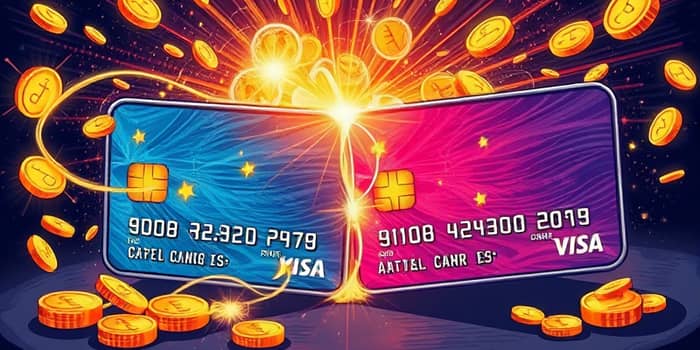
In today’s world of plastic payments, rewards cards offer a gateway to extra value—but they can also become a hidden trap. Understanding both sides empowers you to make choices that suit your lifestyle and financial goals.
Consider Sarah, a busy professional who juggles work travel and family expenses. By pairing a travel card with bonus categories and a flat-rate cash-back card for groceries, she amassed over $1,200 in rewards within one year. That sum funded flights for a family vacation and covered holiday gift purchases.
Rewards cards come in many shapes. Each design serves a purpose, and matching that purpose to your spending habits is essential. Let’s review the main types you’ll encounter.
Sign-up bonuses alone can represent a substantial windfall. For example, a typical offer of 50,000 points can translate to $500 worth of travel or cash equivalents. Meeting the spending threshold within three months is often achievable by pre-paying everyday bills or consolidating planned expenses.
When used with discipline, rewards cards become multipliers for everyday spending. Strategic alignment is key; treat each card like a tool in a toolkit, not a blank check.
Here are the most compelling benefits to leverage:
By combining flat-rate and category-specific cards, a typical household spending $3,000 monthly could easily net $600 in cash back yearly. Add sign-up bonuses, and that figure jumps further, making rewards programs a lucrative way to stretch dollars.
No financial product is risk-free. Rewards cards carry costs that can overshadow benefits if you aren’t careful. Recognizing pitfalls ahead of time helps you avoid common traps.
In fact, in 2023 one major airline slashed award values by 20%, illustrating how program changes can erode your point value overnight. Staying informed via published program updates is crucial to avoid surprises.
To make informed decisions, compare core metrics side by side. The following table highlights typical ranges for rewards, fees, and sign-up bonuses.
Mastering rewards cards requires both planning and self-control. Adopt these habits to turn potential pitfalls into consistent advantages.
Track your spending categories against card offerings using tools or spreadsheets. This practice prevents surprise balances and missed opportunities.
Always pay in full each month to ensure rewards aren’t wiped out by interest charges. Treat the due date as sacrosanct.
Align rewards with lifestyle habits. If you don’t travel often, avoid high-fee travel cards that you won’t fully leverage.
Review card value annually by comparing annual fees and rewards earned. Switch cards if better options emerge.
Example plan: Allocate monthly expenses across cards this way. Use Card A for dining at 5% back, Card B for streaming at 3% back, and Card C for all other purchases at 2% back. Track rewards in a simple spreadsheet or mobile app. At year end, you’ll see which categories deliver the highest returns and where to shift spending.
Despite the allure of bonus points, not everyone benefits. In certain scenarios, rewards cards can do more harm than good.
If you consistently carry a balance, the interest you pay will likely exceed any rewards. Choose a low-rate card or a secured card to rebuild credit without chasing points.
For individuals struggling with impulse purchases, the prospect of rewards may become a justification for overspending. In such cases, a simple debit card or a zero-fee card is safer.
A secured credit card can be a stepping stone for those rebuilding credit. With a refundable security deposit, you can practice on-time payments without the complexity of rewards structures.
Rewards cards stand at the intersection of opportunity and risk. Armed with clear and focused spending strategies and unwavering discipline, you can transform plastic into powerful financial leverage.
Assess your personal habits, match them to card features, and maintain rigorous payment discipline. By doing so, you’ll unlock the benefits while sidestepping the pitfalls that ensnare many consumers.
Ultimately, rewards cards are powerful if you approach them with a mindset of intentional and disciplined financial planning. They won’t solve underlying money habits, but they can reward you for disciplined behavior. Take control of your credit, choose cards that reflect your goals, and watch as small rewards compound into meaningful benefits.
References













